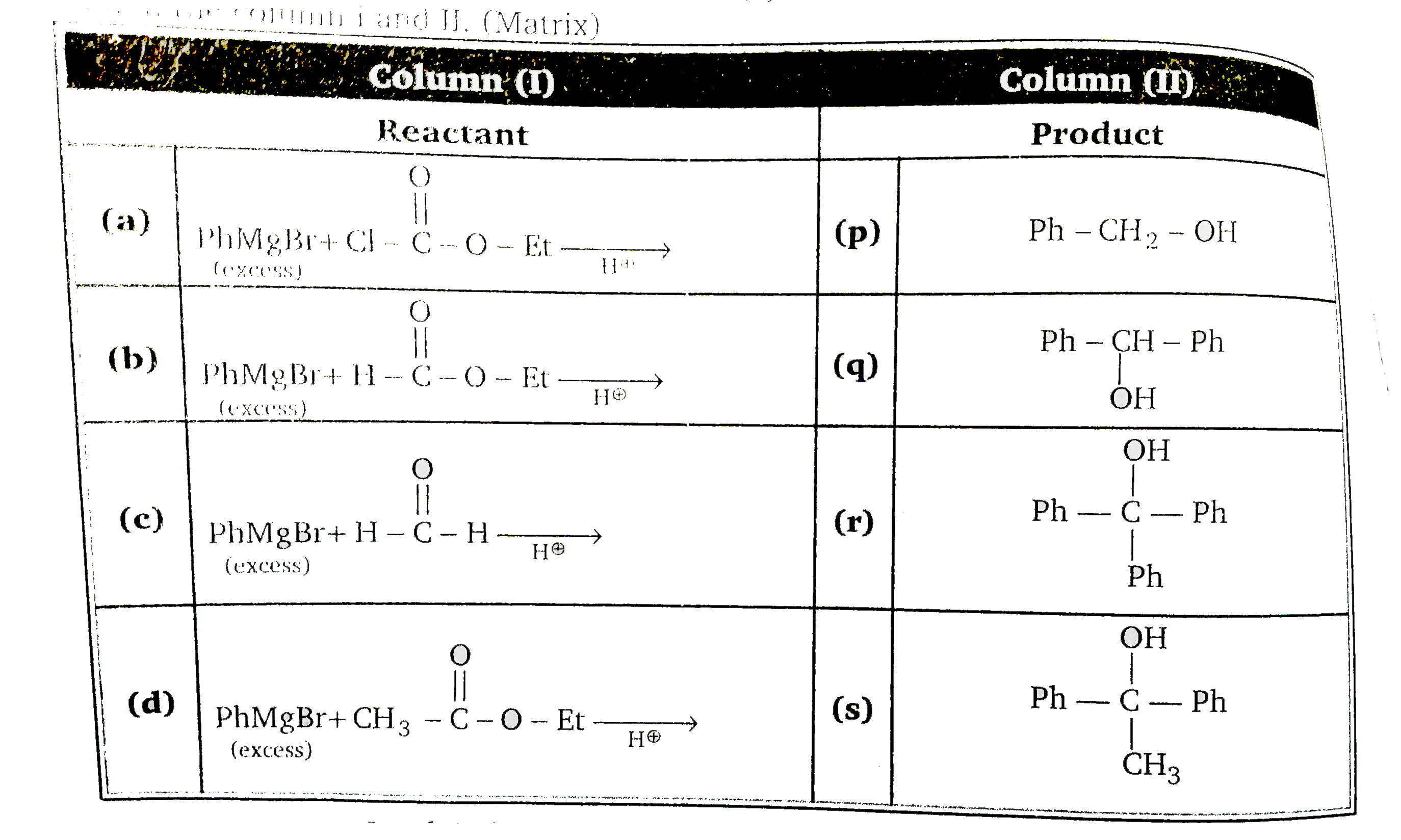Match the following. a.Floating roots(Coloumn I) - (i)Podostemon(Coloumn II) b. Assimilatory roots(Coloumn I) - (ii)Cuscuta (Coloumn II) c. Hygroscopic roots(Coloumn I) - (iii)Bryophylum (Coloumn II) d. Haustorial roots(Coloumn I) - (iv)Jussiaea (Coloumn II) e. Epiphylous roots(Coloumn I) - (v)Orchids(Coloumn II)
a(iii), b(i), c(v), d(ii), e(iv)
a(ii), b(i), c(v), d(ii), e(iv)
a(iv), b(i), c(v), d(ii), e(iii)
a(i), b(ii), c(v), d(iii), e(iv)
The correct Answer is:C
To solve the matching question, we will analyze each type of root mentioned in Column I and identify the corresponding plant from Column II.
1. Floating Roots:
- Definition: These roots are modified to help the plant float. They contain air spaces that provide buoyancy.
- Matching Plant: Jussiaea is known for having floating roots.
- Match: a - (iv) Jussiaea
2. Assimilatory Roots:
- Definition: These roots are involved in photosynthesis, allowing the plant to produce its own food.
- Matching Plant: Podostemon is known for its assimilatory roots.
- Match: b - (i) Podostemon
3. Hygroscopic Roots:
- Definition: These roots absorb moisture from the air rather than from the soil.
- Matching Plant: Orchids have hygroscopic roots that help them absorb water from the atmosphere.
- Match: c - (v) Orchids
4. Haustorial Roots:
- Definition: These roots penetrate the host plant to extract nutrients, typically found in parasitic plants.
- Matching Plant: Cuscuta is a parasitic plant that uses haustorial roots to draw nutrients from its host.
- Match: d - (ii) Cuscuta
5. Epiphylous Roots:
- Definition: These roots grow from the leaves and are adapted to absorb moisture and nutrients directly from the air.
- Matching Plant: Bryophyllum has epiphylous roots that grow from its leaves.
- Match: e - (iii) Bryophyllum
Final Matches:
- a - (iv) Jussiaea
- b - (i) Podostemon
- c - (v) Orchids
- d - (ii) Cuscuta
- e - (iii) Bryophyllum
Summary of Matches:
- a → iv
- b → i
- c → v
- d → ii
- e → iii
- Definition: These roots are modified to help the plant float. They contain air spaces that provide buoyancy.
- Matching Plant: Jussiaea is known for having floating roots.
- Match: a - (iv) Jussiaea
- Definition: These roots are involved in photosynthesis, allowing the plant to produce its own food.
- Matching Plant: Podostemon is known for its assimilatory roots.
- Match: b - (i) Podostemon
- Definition: These roots absorb moisture from the air rather than from the soil.
- Matching Plant: Orchids have hygroscopic roots that help them absorb water from the atmosphere.
- Match: c - (v) Orchids
- Definition: These roots penetrate the host plant to extract nutrients, typically found in parasitic plants.
- Matching Plant: Cuscuta is a parasitic plant that uses haustorial roots to draw nutrients from its host.
- Match: d - (ii) Cuscuta
- Definition: These roots grow from the leaves and are adapted to absorb moisture and nutrients directly from the air.
- Matching Plant: Bryophyllum has epiphylous roots that grow from its leaves.
- Match: e - (iii) Bryophyllum
- a - (iv) Jussiaea
- b - (i) Podostemon
- c - (v) Orchids
- d - (ii) Cuscuta
- e - (iii) Bryophyllum
- a → iv
- b → i
- c → v
- d → ii
- e → iii
Topper's Solved these Questions
Similar Questions
Match Column I with Column II. (a) Physalia (Column I),(i) Devil fish (Column II),(b) Ascaris (Column I),(ii) King crab (Column II),(c) Limulus (Column I),(iii) Roundworm (Column II),(d) Octopus (Column I),(iv) Portuguese man of war (Column II)
View SolutionMatch the coloumn-I with column-II

View Solution
Knowledge Check
Match the following. a. Mixotrophic protist (Coloumn I) - (i) Paranema(Coloumn II) b. Plasmodial slime mould (Coloumn I) - (ii) Polysphondylium(Coloumn II) c. Holozoic protist (Coloumn I) - (iii) Euglena(Coloumn II) d. Saprobic protist (Coloumn I) - (iv) Physerum(Column II) e. Communal slime mould (Coloumn I) - (v) Rhabdomonas (Coloumn II)
Aa(ii), b(iv), c(i), e(v), d(iii)Ba(i), b(ii), c(iii), d(iv), e(v)Ca(iii), b(iv), c(i), d(v), e(ii)Da(i), b(iii), c(ii), d(iv), e(v)Match the following. a. Gametangial contact (Coloumn I) - (i) Agaricus(Coloumn II) b. Planogametic copulation(Coloumn I) - (ii) Mucor(Coloumn II) c. Somatogamy(Coloumn I) - (iii) Puccinia(Coloumn II) d. Gametangial copulation (Coloumn I) - (iv) Allomyces (Coloumn II) e. Spermatization(Coloumn I) - (v) Pythium (Coloumn II)
Aa(v), b(i), c(iv), d(iii), e(ii)Ba(v), b(iv), c(i), d(ii), e(iii)Ca(i), b(iv), c(iii), d(ii), e(v)Da(iii), b(ii), c(iv), d(v), e(i)Match the coloumn I with coloumn II and select the correct option. a. Rhizome(Coloumn I) - (i) Lily(Coloumn II) b. Bulb(Coloumn I) - (ii) Gladiolus(Coloumn II) c. Sucker(Coloumn I) - (iii) Grass(Coloumn II) d. Corm(Coloumn I) - (iv) Curcuma(Coloumn II) e. Runner(Coloumn I) - (v) Banana(Coloumn II)
Aa(ii), b(i), c(v), d(iv), e(iii)Ba(iii), b(i), c(iv), d(ii), e(v)Ca(iv), b(i), c(v), d(ii), e(iii)Da(i), b(iv), c(v), d(ii), e(iii)
Match The coloumn I and II. (Matrix)

View SolutionMatch The coloumn I and II. (Matrix)

View SolutionMatch the following coloumn. a. Corticolous (Coloumn I) - (i) Fungi growing on cow dung (Coloumn II) b. Xylophilous (Coloumn I) - (ii) Fungi growing on wood (Coloumn II) c. Epicylic (Coloumn I) - (iii) Fungi growing on hair (Coloumn II) d. Keratinophilous (Coloumn I) - (iv) Fungi growing on burnt wood (Coloumn II) e. Coprophilous (Coloumn I) - (v) Fungi growing on bark (Coloumn II)
View SolutionMatch the following coloumns and select the correct option. a. Hibernation(Coloumn-I) - (i) Snails(Couloumn-II) b. Aestivation(Coloumn-I) - (ii) Many zooplanktons(Coloumn-II) c. Migration(Coloumn-I) - (iii) Polar bears(Coloumn-II) d. Diapause(Coloumn-I) - (iv) Siberian cranes(Coloumn-II)
View SolutionMatch coloumn-I with coloumn-II and select the correct option using the codes given below (a) E. Coli(Coloumn-I) - (i) cDNA is early embryonic cell(Coloumn-II) (b) ADA deficiency(Coloumn-I) - (ii) Human insuline(Coloumn-II) (c) Rosie(Coloumn-I) - (iii) Alpha-1-antitrypsin(Coloumn-II) (d) Emphysema(Coloumn-I) - (iv) Alpha-lactalbumin(Coloumn-II)
View Solution
